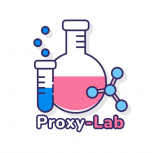[ANN] TeamRedMiner 0.7.17 - Nimiq/Kawpow/Ethash/Cryptonight and More
By
cryptoteh4, in Mining
-
Recently Browsing 0 members
No registered users viewing this page.
-
Topics
-
Сообщения
-
Новый GameFi-токен в экосистеме TON — Kitsune • Переходите в Telegram-бот: @KitsuneTreasury_bot• Подключайте TON-кошелёк• И выполняйте интересные квесты, чтобы заработать токены $KITSUNEНа Fair Launch выделено 35% токенов — это очень много, поэтому награда может быть достойной.Проект Kitsune разрабатывается в коллаборации с платформой для запуска блокчейн-игр Realis, имеющей более чем 6-летний опыт разработки игр и пять успешных игр с 5 млн.Токены $KITSUNE будут интегрированы в игры, выпущенные в формате Mini apps TON. Ссылка на сайт проекта: https://ton.org.sale
-
Сегодня исполняется 14 лет с дня опубликования легендарного биткоин-оффера от Ласло ХейницаНа форуме Bitcoin Talk он предложил 10 000 BTC тому, кто доставит ему пару пицц (и, как позже станет известно, получил их, что и перерастет впоследствии в День Пиццы или Pizza Day) Сегодня его биткоины стоили бы $670 млн
-
PABLOCASH - это простота и удобство для наших клиентов. С нами вы не будете тратить свое время.Скорость это про нас. Контакты:Онлайн чат на сайтеE-mail: info@pablocash.ioWeb: https://PABLOCASH.iO
-
Elevate your dating game with the top site for hassle-free connections. Harmony of intimacy, uninhibitedness with mutual consent Real-life Girls Unsurpassed casual Dating
-
By StarChange · Posted
Добрый день, уважаемые пользователи форума! Принимаем заявки на пополнение Тинькофф Cash-in по выгодным курсам. Контакты: -Сайт: star-change.io-Telegram (через кнопку на сайте)-Почта: info@star-change.io -
By Stan NordFX · Posted
Forex and Cryptocurrency Forecast for 20 – 24 May 2024 EUR/USD: Weak Inflation = Weak USD The American currency suffered two significant blows last week. Although these were not knockdowns, let alone knockouts, these minor shocks pushed the DXY Dollar Index down from 105.26 to 104.20 points, and EUR/USD up from 1.0766 to 1.0895. The first blow came on Tuesday, 14 May, from Federal Reserve Chairman Jerome Powell. Surprisingly, after his comments, the dollar should have strengthened, but instead, it faltered. Powell stated that the regulator's monetary policy is currently tight enough to eventually reduce inflation. However, he also mentioned that the Fed is not confident that inflation is rapidly decreasing and that it may take more time to reach the target level of 2.0%. One could conclude from this that the regulator is not planning to either raise or lower the interest rate. The dollar's weakening at this moment is even more peculiar because Powell's comments were made against the backdrop of strong data on the US Producer Price Index (PPI), indicating industrial inflation growth. In April, this indicator increased by +0.5% on a monthly basis after falling by -0.1% in March (forecast +0.3%). The core index, excluding food and energy, showed growth from 2.1% to 2.4% (y/y). We can only explain the dollar's decline in this situation with one reason. Market participants were possibly expecting that the Fed Chairman would at least hint that if inflation rises, they need to consider another rate hike. But since he did not say this, disappointment ensued. What happened the next day seemed 100% logical. The report from the US Bureau of Labor Statistics (BLS) on Wednesday, 15 May, showed that the US Consumer Price Index (CPI) fell from 0.4% to 0.3% (m/m) against a forecast of 0.4%. On an annual basis, inflation also dropped from 3.5% to 3.4%. Retail sales showed an even stronger decline, from 0.6% to 0.0% on a monthly basis (forecast 0.4%). These data indicated that although inflation in the country is resisting in some areas, it is generally declining. As a result, talks about a possible Fed rate cut this year resurfaced. "These are the first weaker CPI data that the central bank [US] needs to lower rates this year," said Jason Pride, Glenmede's Director of Investment Strategy and Analysis. The likelihood that the rate will remain unchanged until the end of 2024 fell from 35% to 25%, according to the CME's FedWatch Tool. As a result, the DXY continued to fall, and the EUR/USD pair rose. Stock markets rallied, with the S&P 500 and Nasdaq reaching record levels. There were 43 new 52-week highs and no new lows in the S&P 500, while the Nasdaq had 153 highs and 25 lows. The dollar's weakening was halted by comments from Fed representatives at the end of the week. Minneapolis Federal Reserve Bank (FRB) President Neel Kashkari stated that he is not confident that the current "tight monetary policy is having a dominant effect on inflation, so interest rates need to be maintained." New York FRB President John Williams said that one positive inflation report is not enough to neutralize the negative impact of the previous two, so it's not yet time to expect the Fed to start lowering rates soon. As for the common European currency, Reuters writes that it is resisting a fall to parity with the dollar (1:1) due to a favourable economic backdrop and the monetary measures of the European Central Bank (ECB). The six-month low for EUR/USD was recorded on 16 April at 1.0600, against the backdrop of the Eurozone's fragile economy and in sharp contrast with the stable US economy. But gradually, business activity in Europe began to recover, and according to the April report, it grew even faster than on the other side of the Atlantic. This contributed to the positive dynamics of the euro. Reuters experts noted that the gap between economic indicators in Europe and the US is narrowing, providing some support to the euro. EUR/USD closed the week at 1.0868. As for the analysts' forecast for the near future, as of the evening of 17 May, the majority (65%) expect the dollar to strengthen, 20% foresee further weakening, and the remaining 15% took a neutral stance. All trend indicators and oscillators on D1 are 100% coloured green, with a quarter of them signalling that the pair is overbought. The nearest support for the pair is located in the zones of 1.0815-1.0835, then 1.0710-1.0725, 1.0665-1.0680, 1.0600-1.0620, 1.0560, 1.0495-1.0515, 1.0450, 1.0375, 1.0255, 1.0130, 1.0000. Resistance zones are found at 1.0880-1.0915, 1.0965-1.0980, 1.1015, 1.1050, and 1.1100-1.1140. The schedule of the most important events for next week is as follows. On Tuesday, 21 May, US Treasury Secretary Janet Yellen is scheduled to speak. On Wednesday, 22 May, the publication of the minutes from the last FOMC (Federal Open Market Committee) meeting of the US Fed is of particular interest. The next day, as usual, we will learn about the number of initial jobless claims in the US, as well as receive preliminary data on business activity (PPI) in Germany, the Eurozone, and the United States. At the very end of the workweek, on Friday, 24 May, we will learn the GDP data of Germany for Q1 2024. CRYPTOCURRENCIES: Weak USD = Strong BTC "A week of reflection and uncertainty": this is how we described the previous review. On Wednesday, 15 May, this uncertainty was resolved in favour of the crypto market. As often happens, the reason for this was the Fed's monetary policy. The released inflation data in the US influenced market expectations regarding a rate cut. As a result, the American currency weakened, the DXY index went down, and investors' risk appetites increased. Stock indices reached historical highs, with the daily gain for BTC/USD exceeding 8%. ETH/USD also rose by 4.5%. However, this is not yet the long-awaited Bull Rally, and it is quite possible that once the situation with the dollar calms down, the growth of bitcoin and leading altcoins will cease. At least, this is the scenario many crypto market specialists predict. According to Capriole Investment founder Charles Edwards, bitcoin is in a "deathly boring" stage. He believes that the current consolidation period may last from one to six months, during which the quotes will remain in a low-volatility range. This will continue until traders lose patience. Sentiment will be most negative just before the end of the flat period, Edwards believes. "When you get tired of the sideways movement, common symptoms will include thoughts that the halving is already priced in and the bull market is over. […] Your symptoms and shorts will peak just before the mega-rally," predicts the head of Capriole Investment. Galaxy Digital head Mike Novogratz also spoke about the consolidation of the crypto market, whose growth dried up three months after the launch of spot BTC-ETFs. In his opinion, until new circumstances or events lead to growth, the first cryptocurrency will trade in the range of $55,000 to $75,000. Analyst Rekt Capital expressed a similar point of view. He believes that the threat of a bitcoin price drop after the halving has already passed. Drawing an analogy with the situation six years ago, he suggested that on 01 May, BTC hit a bottom around $56,000, and now calm will likely prevail until autumn, with the asset remaining in the accumulation zone. According to Rekt Capital's forecast, the exponential growth phase will begin in the autumn, during which the coin's value will reach new heights. Bitfinex crypto exchange experts are somewhat more optimistic. They believe that the current lull may last only until the beginning of summer, and in Q3–Q4, growth will return. But everything depends on the actions of the US Fed. Bitfinex notes that the decline of the US currency from a six-month peak after the May meeting of the regulator and a weak employment report became a turning point in the trend. Now, the reduction in inflationary pressure in the US has been added. As a result, the weakening of the US currency could stimulate a rally in digital assets. Where will this rally lead in the medium and long term? There are many answers to this question. Some predict the complete collapse and oblivion of bitcoin, while others insist on a price of $1 million per coin. Recently, Jack Dorsey, co-founder of Twitter (now X) and head of Block, joined the "millionaires' club" after CMCC Crest co-founder Willy Woo. He also expects bitcoin to surpass the $1 million mark by 2030, after which it will continue to grow, challenging traditional fiat currencies. The entrepreneur noted that a very interesting aspect of digital gold is the nature of its ecosystem and how it stimulates collective efforts to improve the network. "Aside from the founding story, the most amazing thing about bitcoin is that everyone [...] who makes any effort to improve it makes the whole ecosystem better, which drives the price up. This is an incredible movement. [...] It has taught me a lot," he explained. Businessman, writer, and founder of Edelman Financial Services Ric Edelman believes that traditional international investors will do everything possible to diversify their portfolios. And if they all invest at least 1% of their funds in the first cryptocurrency, the bitcoin market volume will reach an unprecedented $7.4 trillion, and the asset price will soar to $420,000. The growth of the market capitalization will be facilitated by spot BTC-ETFs. According to Edelman, they cover a much broader investor base than traditional assets. "In addition, crypto ETFs are incredibly cheap. They are 20-25% cheaper than assets on Coinbase or other crypto exchanges. Plus, they are held in brokerage accounts. Bitcoin ETFs allow for traditional investment strategies such as rebalancing and dollar-cost averaging. There are also tax advantages," Edelman lists the advantages of such funds. "I am confident that bitcoin and ethereum ETFs will have a significant impact on the market in the long run," he stated. However, this last assertion can be disputed. While BTC-ETFs are a reality, the situation with ETH-ETFs is not so simple. Many expected the SEC (Securities and Exchange Commission) to approve applications for the launch of ethereum funds in May. But this has not happened yet. Moreover, Bloomberg analyst Eric Balchunas and securities lawyer Scott Johnson believe that the chances of approving spot ETH-ETFs are almost zero. In their opinion, the SEC is now considering the possibility of rejecting these funds' launch based on the fact that the applications were submitted with violations, as the fund shares are securities, not exchange-traded commodities. The question of choosing between bitcoin and ethereum confronts many investors. The roles of these two cryptocurrencies differ, and this can significantly affect their profitability. Bitcoin is increasingly seen as digital gold, providing stability during times of economic uncertainty. This concept is supported by the observed post-halving volatility decrease, which was even lower than that of many companies in the S&P 500 index (Fidelity data). Ethereum continues to push the boundaries of what is possible through technological innovations, including the recent Dencun update aimed at reducing fees and increasing scalability. However, these changes have once again made the network inflationary, nullifying the deflationary trend established after The Merge in 2022. As a result, ETH's volatility remains higher than BTC's. According to ChatGPT, the artificial intelligence from OpenAI, the choice between these assets largely depends on individual investment strategy and risk tolerance. Bitcoin is generally better suited for investors seeking a relatively safe store of value and those new to cryptocurrencies. In contrast, Ethereum is better for those who believe in the future of blockchain technology. The main altcoin potentially offers higher rewards but also higher risks. Investor and Eight founder Michaël van de Poppe has already made his choice. He admitted to selling all his bitcoins to buy altcoins. Van de Poppe believes that many of them are undervalued. And as soon as ETH prices start to rise, other alternative tokens will also go up. The expert believes that the altcoins he has chosen are likely to start growing earlier and faster than the market leader, allowing for greater profit than from investments in digital gold. At the time of writing this review, the evening of Friday, 17 May, BTC/USD is trading at $66,835, and ETH/USD at $3,095. The total market capitalization of the crypto market is $2.42 trillion ($2.24 trillion a week ago). The Crypto Fear & Greed Index has risen from 66 to 74 points but remains in the Greed zone. NordFX Analytical Group Notice: These materials are not investment recommendations or guidelines for working in financial markets and are intended for informational purposes only. Trading in financial markets is risky and can result in a complete loss of deposited funds. #eurusd #gbpusd #usdjpy #btcusd #ethusd #ltcusd #xrpusd #forex #forex_example #signals #cryptocurrencies #bitcoin #stock_market https://nordfx.com/ -
By Saint-Exchange · Posted
Добрый день уважаемые форумчане! Дуров заявил об успехе Notcoin. Что это значит для криптовалют в Telegram "В четверг, 16 мая, крупнейшие криптобиржи, включая Binance, OKX и Bybit, провели листинг токена NOT игры Notcoin. Игра существует в виде приложения внутри мессенджера Telegram и с момента запуска в январе собрала более 35 млн игроков, которые конвертировали игровые монеты в токены. На старте торгов цена токена доходила до $0,37, но уже несколько минут спустя зафиксировалась на $0,01. По данным на 17 мая 20:00 мск, NOT торгуется по $0,007 в паре со стейблкоином USDT на бирже Binance при капитализации более $700 млн" Хотели бы увидеть на нашем сервисе направление с монетой NOT? -
Оптовые закупки прокси?Предлагаем выгодные условия для крупных заказов. Прокси для всех – от стартапов до крупных корпораций!🥰 Сайт🙂 Телеграм❤️ Вконтакте 🤧 Поддержка 🤩Твой промокод CRYPTO_LAB
-
By Finansovich-Exchange · Posted
Уважаемые, пользователи! Мы работаем ежедневно с 10:00 до 22:00 (МСК) Напоминаем Вам, что мы обрабатываем такие запросы как: Крипта - Наличные RUB в любом городе по лучшему курсу, на данный момент на сайте отображены города Казань и Новосибирск, в скоро времени добавим больше направлений, где вы сможете получить наличные за крипту. С уважением, обмен-сервис Finansovich exchange. -
18.05.2024 Тарифы Kingex 👑 Покупка криптовалюты / Buying cryptocurrency: BTC/ETH +1.4% (Мы доплачиваем) USDT +1.4% (Мы доплачиваем) ^^SALE^^ от 50k + 1.6% Продажа криптовалюты / Selling cryptocurrency: BTC/ETH +3.4% USDT +3.4% Оператор: @Kingex Сайт: Kingex.io Курс на протяжении дня может меняться! ------------------------ Будьте ОСТОРОЖНЫ, появились фейки! Наш телеграм: @Kingex
-





